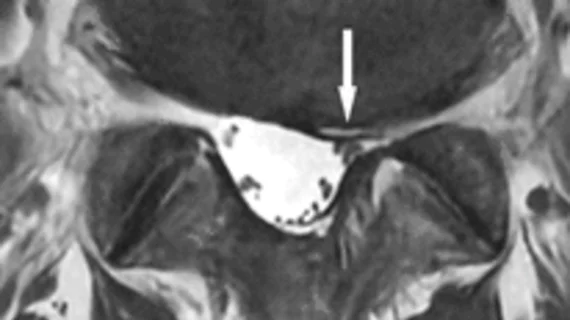Rads are more accurate when they have access to patients' self-reported symptoms
Having detailed knowledge of patients’ symptoms can significantly improve radiologists’ diagnostic accuracy.
This is especially true for those undergoing lumbar MRI, as these exams often show abnormalities without correlating symptoms, making it difficult to distinguish between incidental findings and the actual source of patients’ issues. Having access to patients’ self-reported symptom information can give radiologists an advantage, authors of an analysis published Tuesday in Radiology suggest.
“MRI exams of the lumbar spine often show many degenerative abnormalities. Most of these are incidental findings that do not cause pain,” explains study author William E. Palmer, MD, the division chief of musculoskeletal radiology at Massachusetts General Hospital in Boston. “To diagnose the true pain generators and make the best treatment decisions, symptoms must be matched with MRI abnormalities.”
To assess the effects of providing radiologists with information specific to patients’ symptoms, a team at Mass General had 240 patients undergoing lumbar MRI complete pre-scan questionnaires related to their pain—location, severity, duration, relieving factors, etc. Radiologists alternated between interpreting the exams with and without the questionnaires and graded their diagnostic certainty on a scale from 0 to 100. Their diagnoses were then compared to those of spine specialists, who consulted with and treated the patients.
The questionnaires proved to be extremely beneficial. The radiologists achieved nearly perfect agreement with the spinal specialists when they were able to view patients’ self-reported symptoms. The questionnaires improved the rads’ diagnostic accuracy and confidence, while also helping to avoid discrepancies between all readers.
“The questionnaire is important because it obtains symptom information directly from patients and communicates it to radiologists at the time of lumbar spine MRI interpretation,” Palmer notes. "By distinguishing actionable pain generators from incidental findings, radiologists can best help primary care physicians who depend on MRI reports to guide their treatments and referrals.”
Learn more about the results here.

